Croatian supercar company Rimac sets a new Guinness World Record for speed… IN REVERSE! The £2.1 million Nevera EV clocks 170mph in reverse
- Nevera clocked a whopping 275.74 km/h (171.34 mph) backwards
- He broke the previous record, which stood for 22 years, with 109 km/h
Most of us never travel in a car at terrifying speeds of up to 170mph – unless we want to be stripped of our driver’s license forever.
However, a new Guinness World Record has recorded this speed by Croatian supercar company Rimac… but with a difference.
That’s because his £2.1million Nevera clocked a whopping 170mph in reverse, smashing the previous record that stood for 22 years by a whopping 69mph.
Mirror, signal, very fast maneuver! Rimac just broke the Guinness World Record for top speed in reverse
The luxury car maker says the record comes 56 years after Lamborghini’s V12-engined Miura – often regarded as the world’s first supercar – became the world’s first production model to break the 270 km/h barrier.
However, that was traveling forward.
The previous record for this obscure feat was set by a Caterham 7 Fireblade in 2001, which took place during the filming of the now long-forgotten ITV motoring programme, Traction.
The amazing feat took place in Rimac’s ‘Time Attack Edition’ of the Nevera.
The incredibly expensive EV has four liquid-cooled electric motors and a 120 kWh battery. Together they produce a staggering power of 1,914 hp and 1,740 Nm of torque.
The reverse speed record was set at the Automotive Testing Papenburg facility in Germany, where the Nevera also broke more than twenty other acceleration and braking records a day earlier this year.
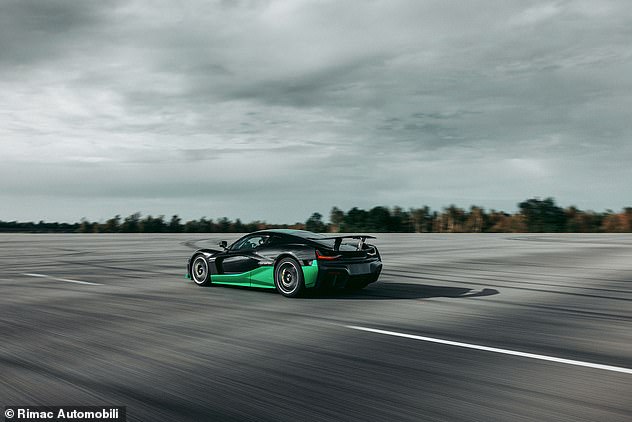
The incredible £2.1m electric Nevera supercar has clocked a whopping 170mph in reverse, smashing the previous record that stood for 22 years by a whopping 62mph
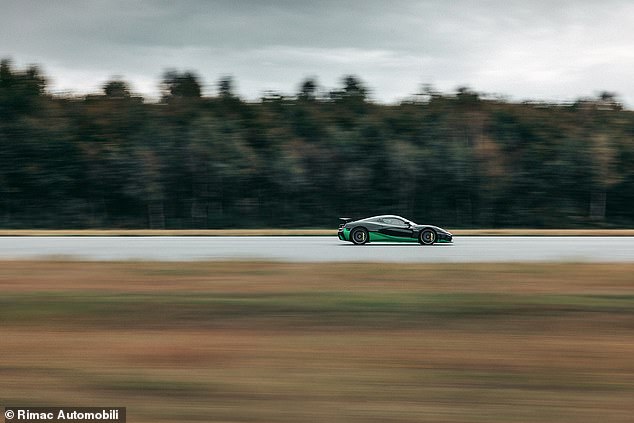
The amazing feat took place in Rimac’s ‘Time Attack Edition’ of the electric Nevera. It has four liquid-cooled electric motors and a 120 kWh battery. Together these produce a staggering power of 1,914 hp and 1,740 Nm of torque
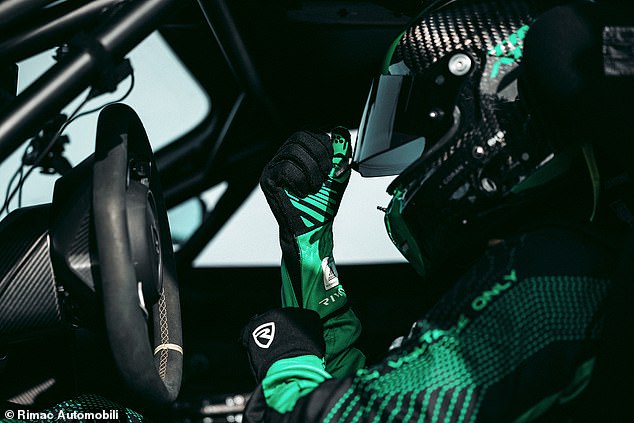
Test rider Goran Drndak said it was a completely different sensation to see the landscape flash away faster and faster and his neck jerked forward instead of back.
It means the incredible performance car can now add the fastest reverse speed to its arsenal of records, joining the outright top speed of 250mph for production EVs achieved last November.
The Croatian carmaker – which also has a majority stake in luxury supercar brand Bugatti – also holds the ‘official’ Nürburgring lap record for electric cars of seven minutes and five seconds, which was set earlier this year.
However, we say ‘official’ because the NIO EP9 clocked the formidable German circuit in just under 6 minutes and 46 seconds in 2017.
However, it turned out that the EV was running on custom racing tires and not road-specific rubber, negating its performance.
The monumental feat of reversing was achieved thanks to the Rimac EV’s lack of gears.
The Nevera has four separate motors that go forward or backward, but it’s always “one brutal wall of acceleration, all the way from a stop,” the automaker says.
That means the same powertrain that can sprint forward from 0 to 160 km/h in 3.21 seconds (and from 0 to 200 km/h in just under 11 seconds) can also deliver similarly earth-shattering performance in reverse.
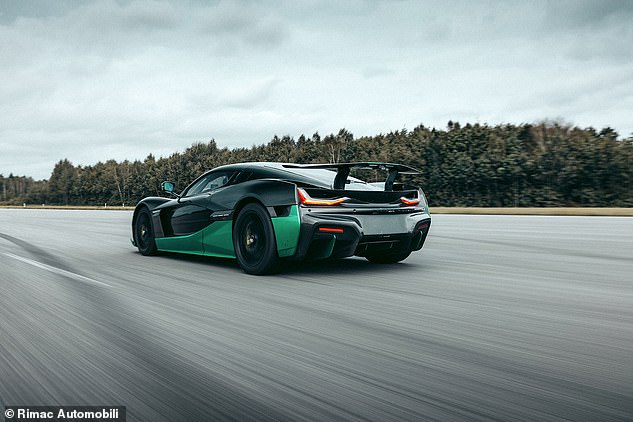
The reverse speed record was set at the Automotive Testing Papenburg facility in Germany, where the Nevera also broke more than twenty other acceleration and braking records a day earlier this year.
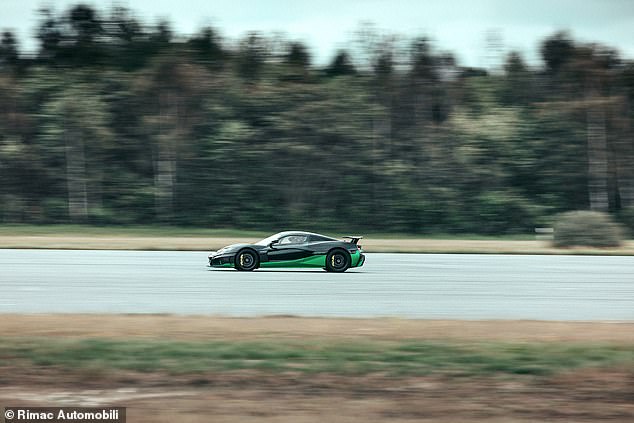
The high-end carmaker says the record comes 56 years after Lamborghini’s V12-engined Miura – often regarded as the world’s first supercar – became the world’s first production model to break the 280km/h barrier.

Guinness World Records was on hand to present the Rimac team with the award
Matija Renic, Nevera’s chief program engineer, said: ‘During development we found out that Nevera would probably be the fastest car in the world when driving in reverse, but we laughed it off.
‘After all, the aerodynamics, cooling and stability were not designed for reversing at speed.

“But then we started talking about how fun it would be to give it a try.
‘Our simulations showed that we could reach a speed of over 240 km/h, but we had no idea how stable that would be. We were entering unknown territory.’
Test driver Goran Drndak added: ‘You look straight back and see the landscape flash away from you faster and faster, feeling your neck being pulled forward in almost the same sensation you would normally experience under heavy braking.
“You move the steering wheel ever so gently, being careful not to upset your balance, watching your heading and your braking force in the rearview mirror while keeping an eye on your speed.”
VIDEO

VIDEOS OF ELECTRIC CARS
